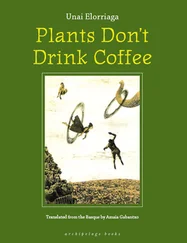Physiology of Salt Stress in Plants
Здесь есть возможность читать онлайн «Physiology of Salt Stress in Plants» — ознакомительный отрывок электронной книги совершенно бесплатно, а после прочтения отрывка купить полную версию. В некоторых случаях можно слушать аудио, скачать через торрент в формате fb2 и присутствует краткое содержание. Жанр: unrecognised, на английском языке. Описание произведения, (предисловие) а так же отзывы посетителей доступны на портале библиотеки ЛибКат.
- Название:Physiology of Salt Stress in Plants
- Автор:
- Жанр:
- Год:неизвестен
- ISBN:нет данных
- Рейтинг книги:4 / 5. Голосов: 1
-
Избранное:Добавить в избранное
- Отзывы:
-
Ваша оценка:
- 80
- 1
- 2
- 3
- 4
- 5
Physiology of Salt Stress in Plants: краткое содержание, описание и аннотация
Предлагаем к чтению аннотацию, описание, краткое содержание или предисловие (зависит от того, что написал сам автор книги «Physiology of Salt Stress in Plants»). Если вы не нашли необходимую информацию о книге — напишите в комментариях, мы постараемся отыскать её.
Discover how soil salinity affects plants and other organisms and the techniques used to remedy the issue Physiology of Salt Stress in Plants,
Physiology of Salt Stress in Plants
Physiology of Salt Stress in Plants
Physiology of Salt Stress in Plants — читать онлайн ознакомительный отрывок
Ниже представлен текст книги, разбитый по страницам. Система сохранения места последней прочитанной страницы, позволяет с удобством читать онлайн бесплатно книгу «Physiology of Salt Stress in Plants», без необходимости каждый раз заново искать на чём Вы остановились. Поставьте закладку, и сможете в любой момент перейти на страницу, на которой закончили чтение.
Интервал:
Закладка:
1.9 Role of Salt Toxicity in the Operation of Green Revolution
The third agricultural revolution colloquially termed as the Green Revolution was a path‐breaking exercise that occurred between the early 1950s and late 1960s in the twentieth century. Impacts were majorly widespread in developing nations. Beside positive, the revolution also brought specific rampant detrimental impacts on both land and crop health (Pingali 2012). Several newly derived products and technologies such as synthetic fertilizers, herbicides, pesticides, and irrigation were introduced to amplify the crop yield. But, both in terms of dependency and severity, chemical fertilizers surpass the influence of introductions. The scarcity of scientific information deceived to excessive usage of the above without evaluating the requirement resulted in reduced soil buffer. Furthermore, to compensate for the disorder, an additional application of fertilizer becomes a mandate. Constituents such as sodium and potash salt present in abundance in those fertilizers influence pH imbalance and turn the soil alkaline (Shrivastava and Kumar 2015). The assimilation of salt makes the soil susceptible to degradation. It is accounted for globally approximately9 M ha of cultivable land transforms nonfertile every year due to enforced salinity. Moreover, salinity can also be induced due to flooding caused by over‐irrigation and inadequate irrigation. Vegetable crops are more prone to vulnerability upon saline exposure resulting in depleted yield (Pingali 2012; Patel 2013; Sharma and Singh 2015; Eliazer‐Nelson et al. 2019).
1.10 Reaching the Current Status and Conclusion
Subjectivity to the external stressors makes the plant vulnerable and critically impacts productivity. Salinity being a predominant stress factor accounts for a significant chunk of yield‐oriented issues and up to further extent desertification. The usage of inferior quality of irrigation water and unlimited usage of chemical fertilizers often provoke saline intensification in arid and semiarid regions. Saline soil interrupts the unrestricted plant water uptake by hampering the osmotic balance. Sodic soil enforces the accumulation of sodium and chloride ions in the plant tissue. It leads to the scarcity of the essential minerals and inhibition of physiological growth due to retarded cell division rate. Plants exposed to sodicity often subject to ionic inequity and report an acute dearth of vital minerals such as potassium, magnesium, and calcium.
Moreover, excess sodium gets further transported to the xylem tissue of leaves and settle as a residue after evaporation (Baum et al. 2000). The accumulated salt mass disrupts the chloroplast structure and interferes with photosynthesis. As a preventive measure, the inherent water potential of the plant surge below that of the resident soil to withhold the negative turgor and uphold water balance. However, to mitigate a specific situation, plants internally enhance the solute concentration to uplift the osmotica (Carillo et al. 2011). Failing so may trigger the generation of ROS. Inequity between excessive synthesis and destitute scavenging often leaves insistent ROSs in the system. It oxidizes organics and destructs sensitive structures such as cell membranes, DNA and RNA structures, etc. (Gupta and Huang 2014).
Contrarily, the assimilation of metabolic solutes and other soil‐driven solutes in the plant is a distinct scenario, while exposed to stressors (Thomas and Bohnert 1993). These solutes safeguard the vegetation against alien stresses by different mechanisms, including osmoregulation, ROS decontamination, shield the cell membrane against the rupture, and enhancement of enzymatic/protein balance (Hasegawa et al. 2000; Hasanuzzaman et al. 2014; Acosta‐Motos et al. 2017). Furthermore, solutes such as osmoprotectants provide auxiliary protection to cellular components against desiccation. Solutes such as sucrose, glycine betaine, trehalose, and proline are appropriate examples of the above (Hanin et al. 2016).
While salinity is a violent threat steadily evolving across the globe, sustaining food security at this juncture is an enormous task before the agriculturists. Including genetic engineering, several approaches were embraced to produce salt‐tolerant vegetative species mimicking halophytes. Unfortunately, none of the species could be commercialized due to certain limitations.
Reclamation of the deserted lands could be the other way around. Restoration of the sodic soil is more accepted. The conventional approach includes the application of gypsum or pyrite. At the same time, recent researches recommended the usage of biodegradable municipal waste and industrial sludge as a sustainable alternative. Further research needs to be carried out to comprehend the challenges oriented and develop this technique as the alternate disposal model, especially for a small town with no existing waste management mechanism (ICAR 2015).
Acknowledgments
The review work was assisted by Dr. DK Sharma, Emeritus Scientist and Ex. Director, CSSRI, Karnal. We also thank Dr. Prasenjit Mondal, Associate Professor, Chemical Engineering Department, IIT Roorkee, for extending his insights and expertise related to chemical desalination techniques. Authors would also like to acknowledge Dr. RD Tripathi, Chief Scientist, CSIR‐NBRI, for his comments to escalate the technical quality of the manuscript. Ultimately, we would like to extend our gratitude to UGC for providing financial assistance for the literature study.
References
1 Acosta‐Motos, J.R., Ortuno, M.F., Bernal‐Vicente, A. et al. (2017). Plant responses to salt stress: adaptive mechanisms. Agronomy 7: 18.
2 Agassi, M., Bloem, D., and Ben‐Hur, M. (1994). Effect of drop energy and soil and water chemistry on infiltration and erosion. Water Resour. Res. 30: 1187–1193.
3 Ashraf, M. (2004). Some important physiological selection criteria for salt tolerance in plants. Flora 199: 361–376.
4 Aslam, M., Ahmad, K., Akhtar, M.A., and Maqbool, M.A. (2017). Salinity stress in crop plants: effects of stress, tolerance mechanisms and breeding strategies for improvement. J. Agric. Basic Sci. 2: 70–85.
5 Bano, A. and Fatima, M. (2009). Salt tolerance in Zea mays (L.) following inoculation with Rhizobium and Pseudomonas. Biol. Fertil. Soils 45: 405–413.
6 Baum, S.F., Tran, P.N., and Silk, W.K. (2000). Effects of salinity on xylem structure and water use in growing leaves of sorghum. New Phytol. 146: 119–127.
7 Cañedo‐Argüelles, M., Kefford, B., and Schäfer, R. (2018). Salt in freshwaters: causes, effects and prospects ‐ introduction to the theme issue. Philos. Trans. R. Soc. Lond. Ser. B Biol. Sci. 374: 20180002.
8 Carillo, P., Grazia, M., Pontecorvo, G. et al. (2011). Salinity stress and salt tolerance. In: Abiotic Stress in Plants ‐ Mechanisms and Adaptations (eds. A. Shanker and B. Venkateswarlu), 26–33. London, UK: IntechOpen Limited.
9 Chandna, R., Azooz, M.M., and Ahmad, P. (2013). Recent advances of metabolomics to reveal plant response during salt stress. In: Salt Stress in Plants (eds. P. Ahmad, M.M. Azooz and M.N.V. Prasad), 1–14. Basel, Switzerland: Springer.
10 Corwin, D.L. and Yemoto, K. (2017). Salinity: electrical conductivity and total dissolved solids. Methods Soil Anal. 2: 1–16.
11 Cucci, G., Lacolla, G., Mastro, M.A., and Caranfa, G. (2016). Leaching effect of rainfall on soil under four‐year saline water irrigation. Soil Water Res. 11: 181–189.
12 Darko, E., Végh, B., Khalil, R. et al. (2019). Metabolic responses of wheat seedlings to osmotic stress induced by various osmolytes under iso‐osmotic conditions. PLoS One 14: e0226151.
13 Staniforth, M.J. and Davies, P. (2018). Performance analysis and optimisation of a saline groundwater batch reverse osmosis desalination system for irrigation and education in the Jordan Valley. Master's thesis. Aston University, United Kingdom. doi:10.13140/RG.2.2.31624.16643.
Читать дальшеИнтервал:
Закладка:
Похожие книги на «Physiology of Salt Stress in Plants»
Представляем Вашему вниманию похожие книги на «Physiology of Salt Stress in Plants» списком для выбора. Мы отобрали схожую по названию и смыслу литературу в надежде предоставить читателям больше вариантов отыскать новые, интересные, ещё непрочитанные произведения.
Обсуждение, отзывы о книге «Physiology of Salt Stress in Plants» и просто собственные мнения читателей. Оставьте ваши комментарии, напишите, что Вы думаете о произведении, его смысле или главных героях. Укажите что конкретно понравилось, а что нет, и почему Вы так считаете.












